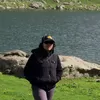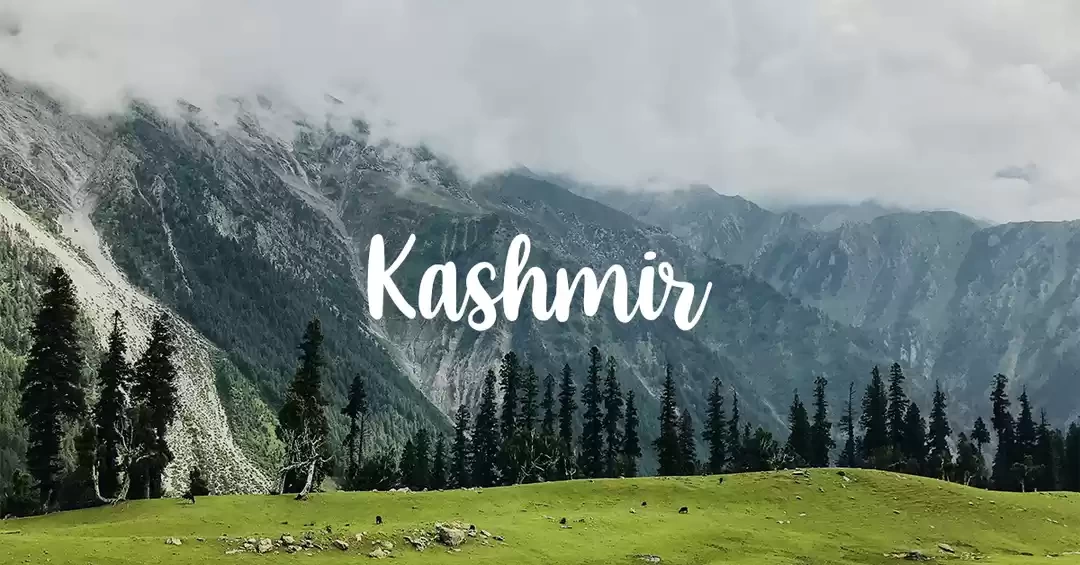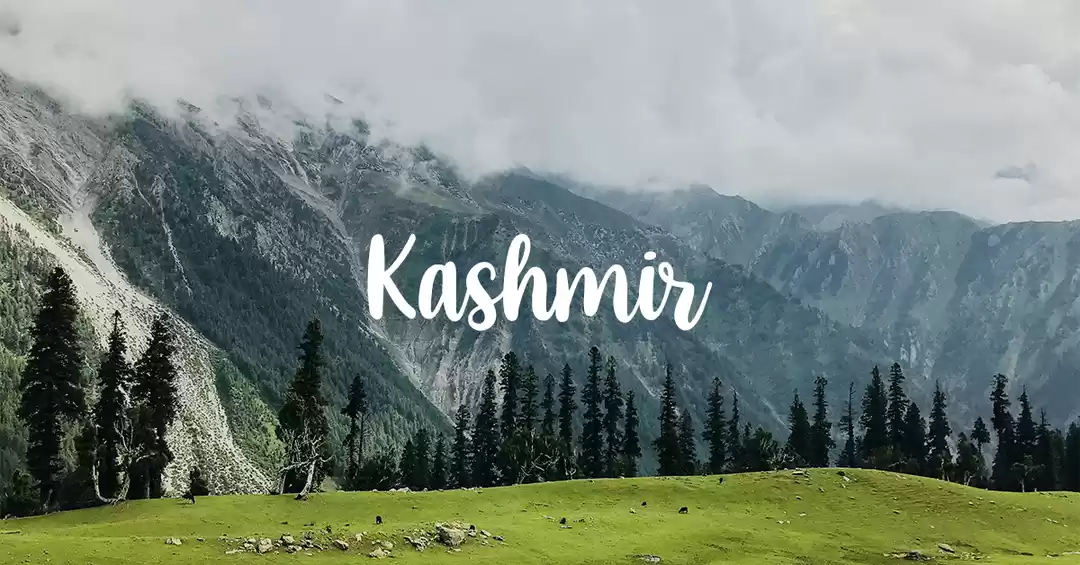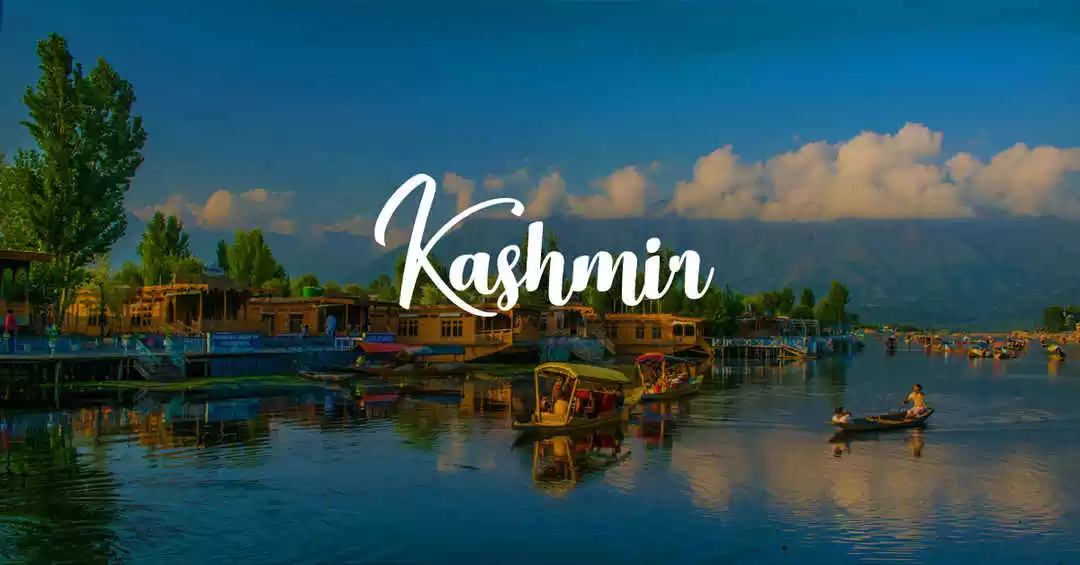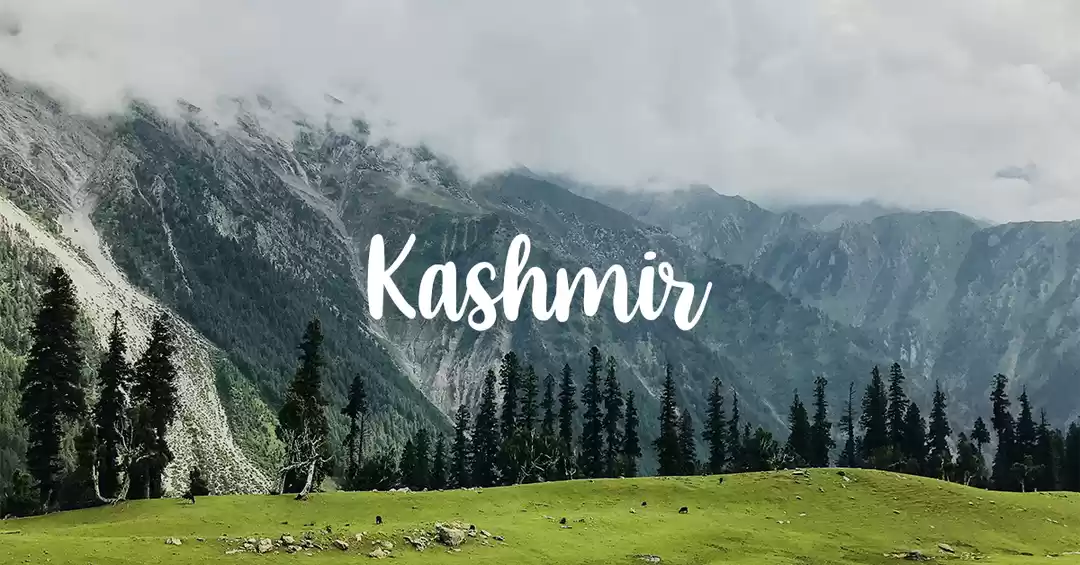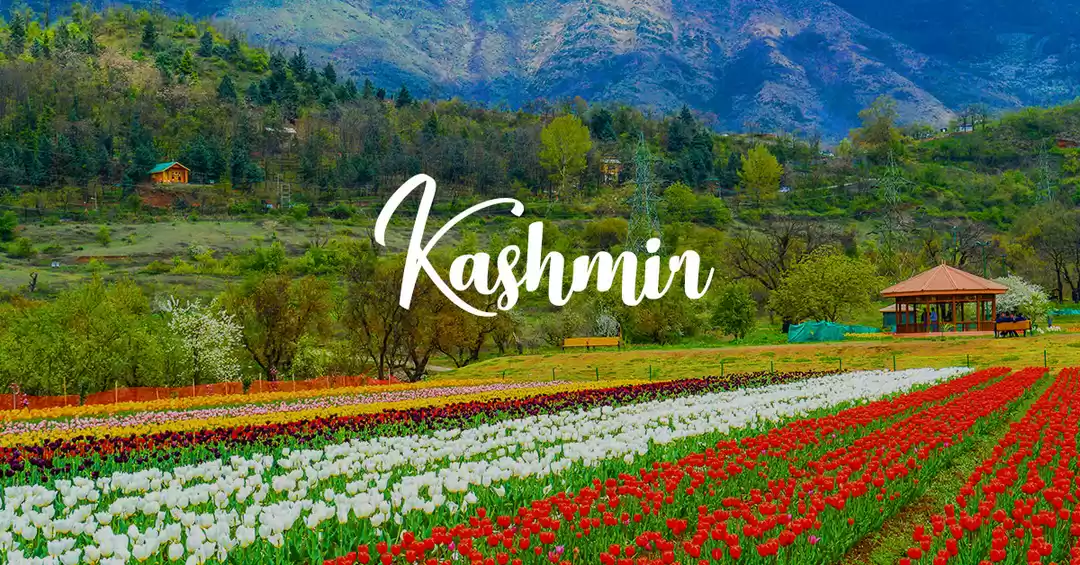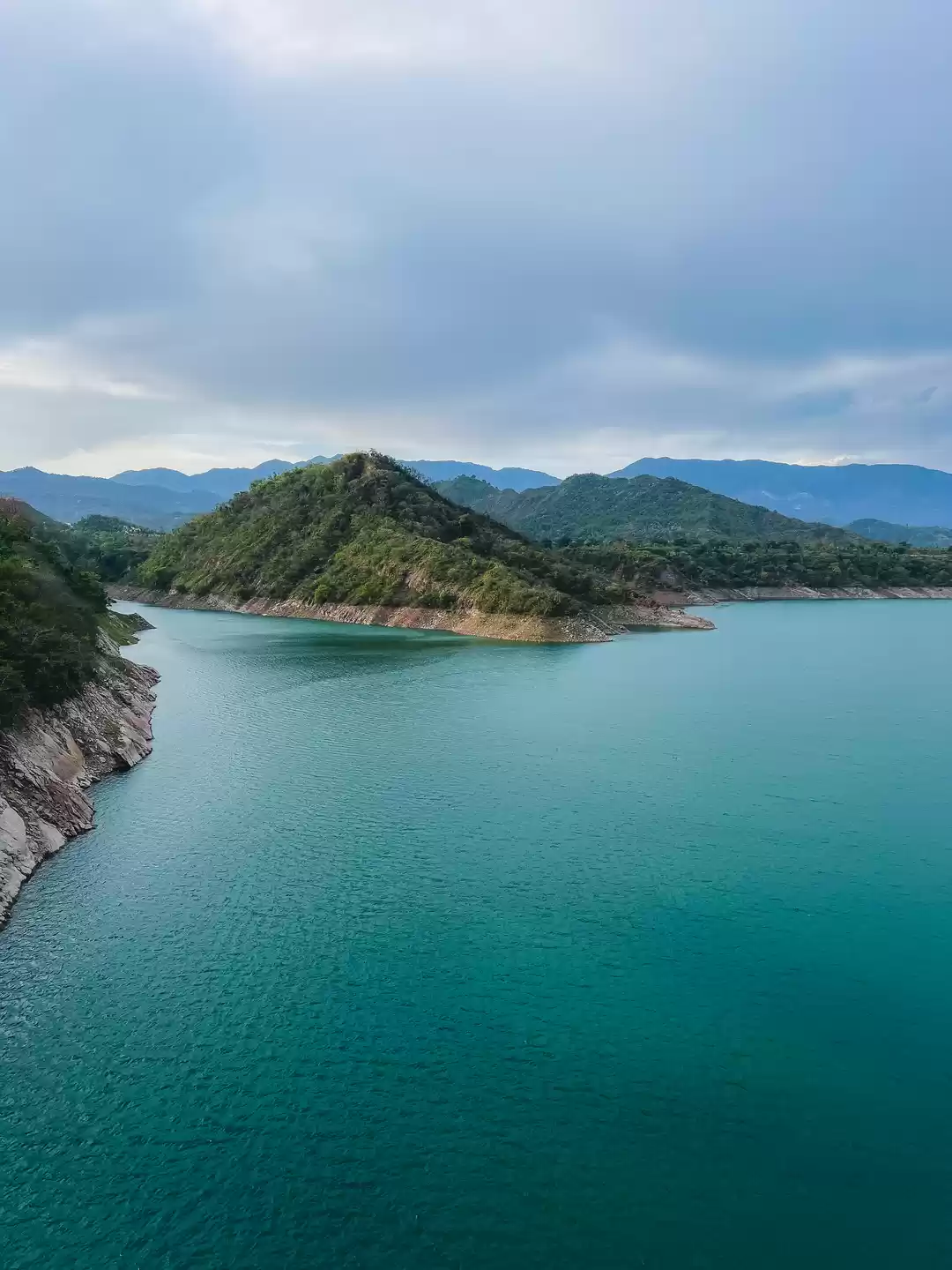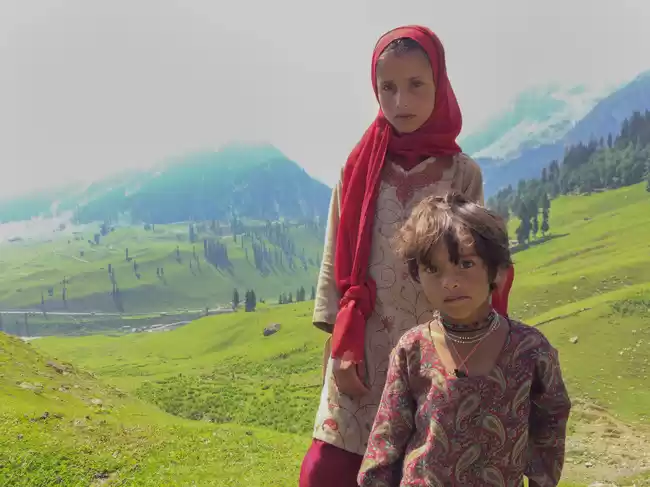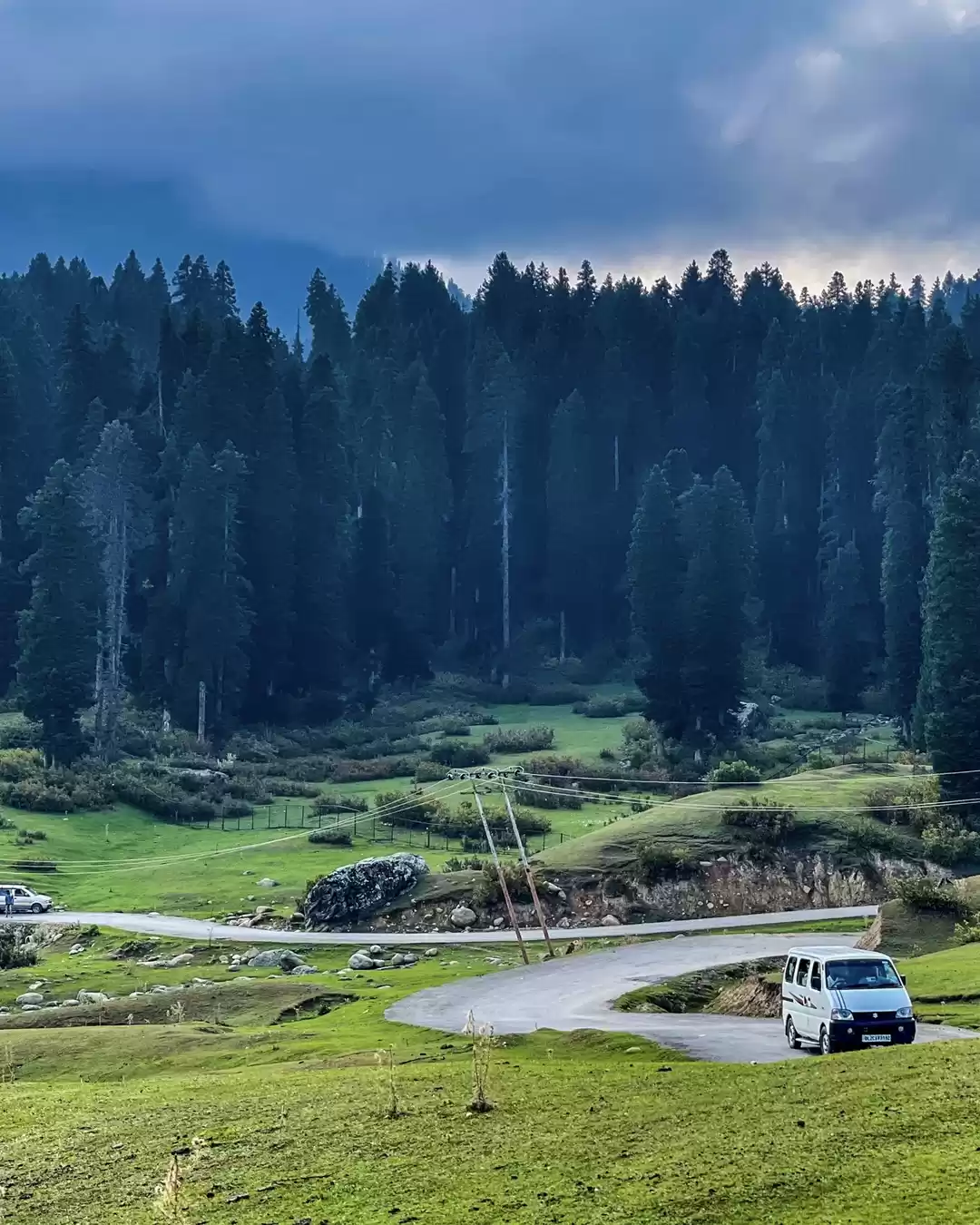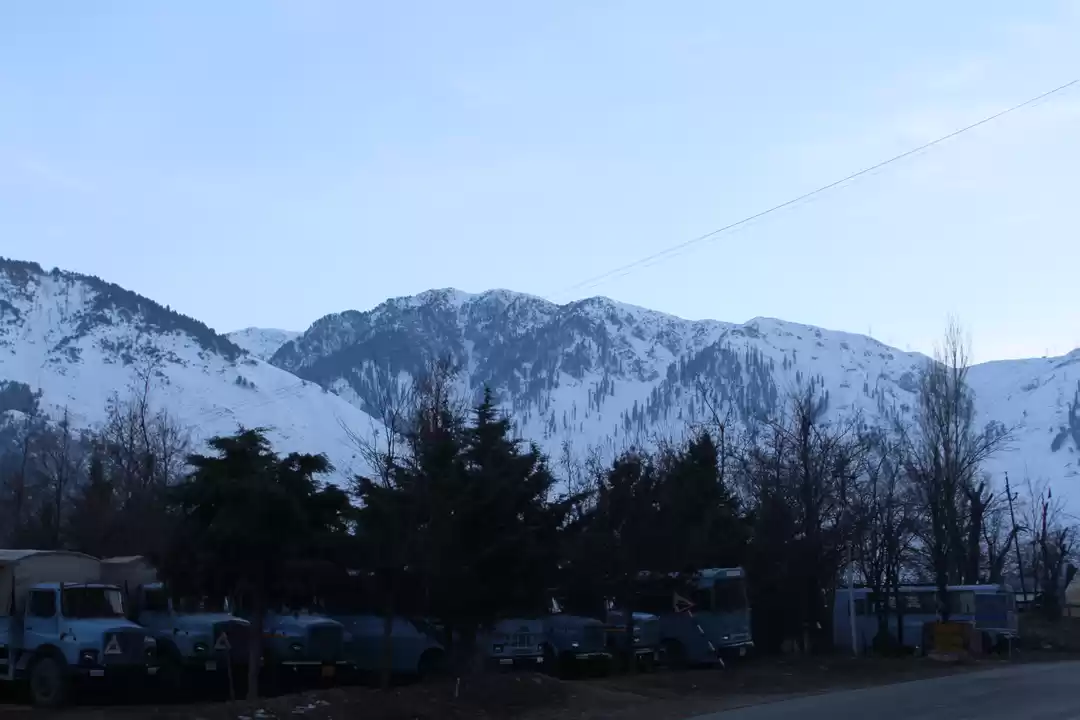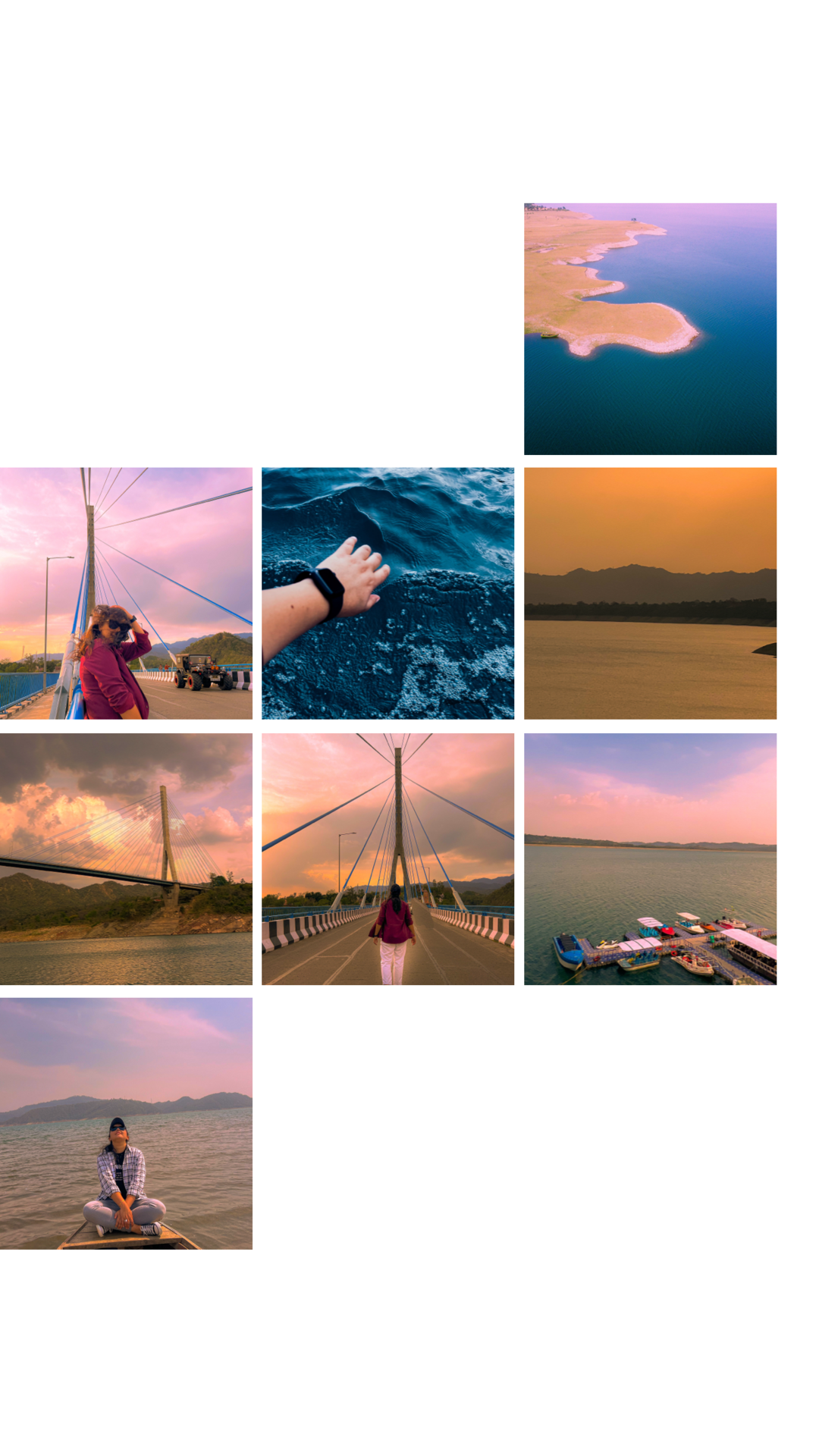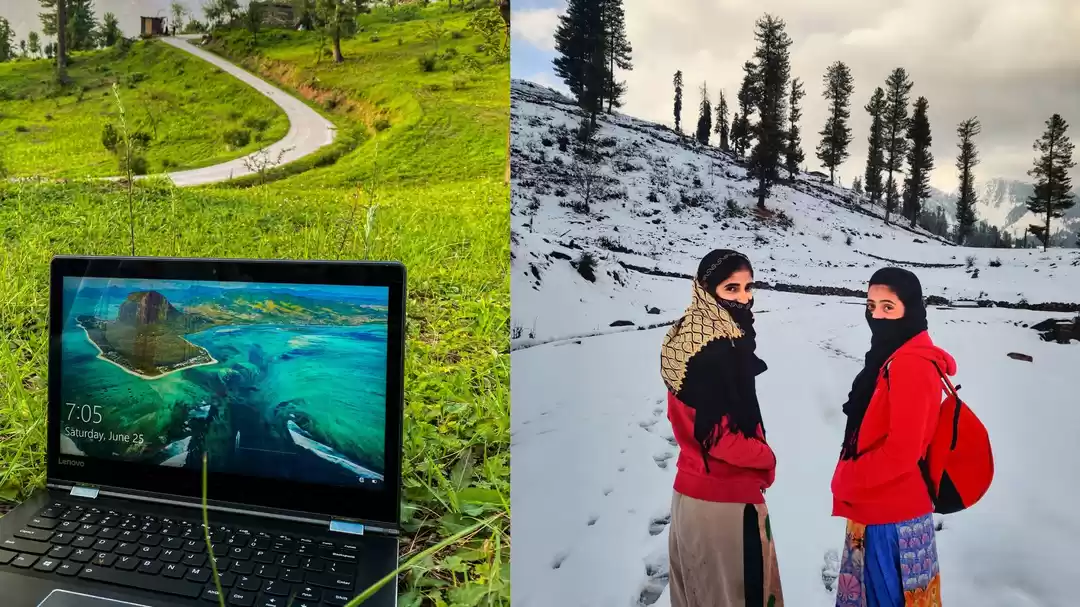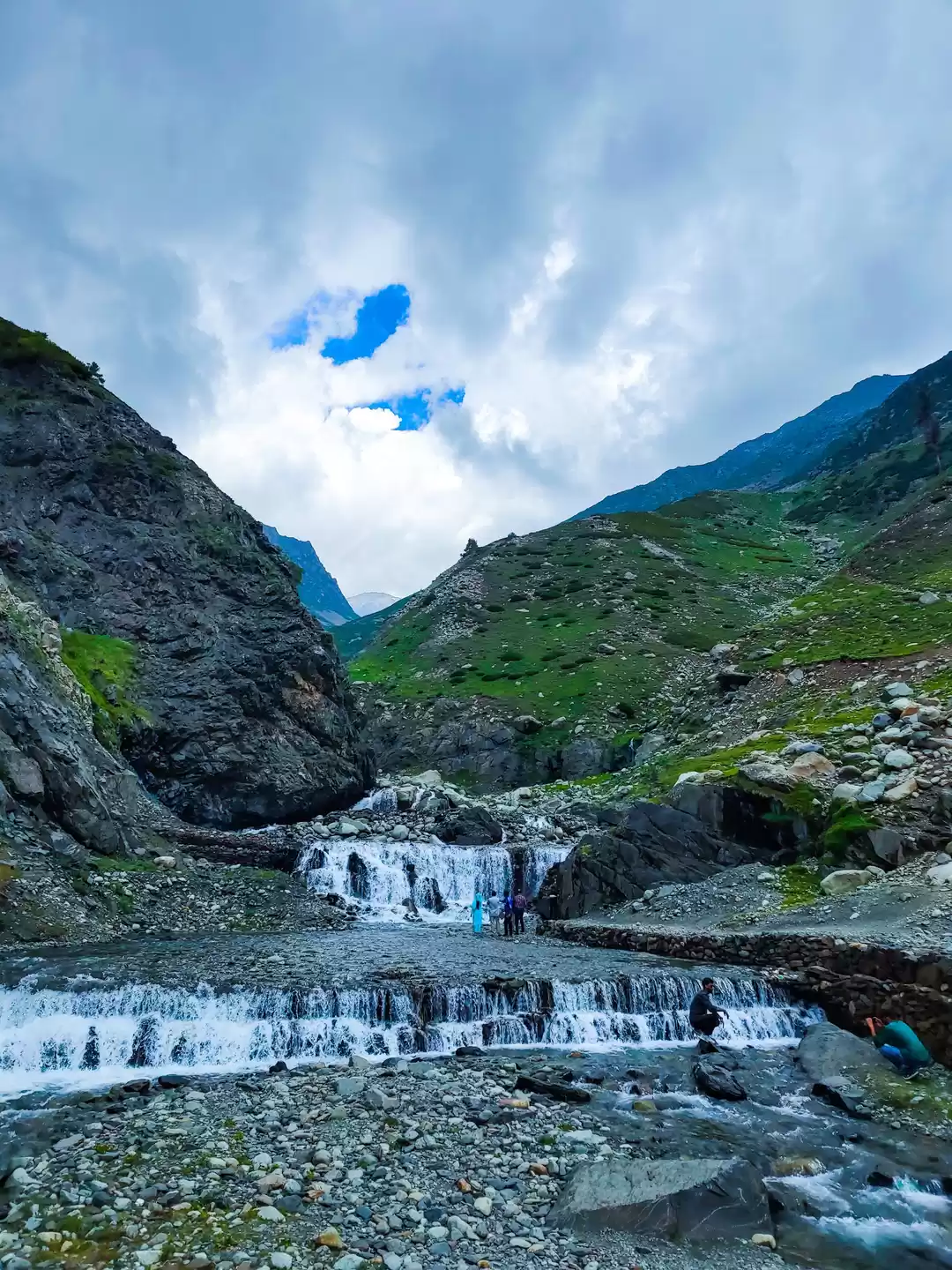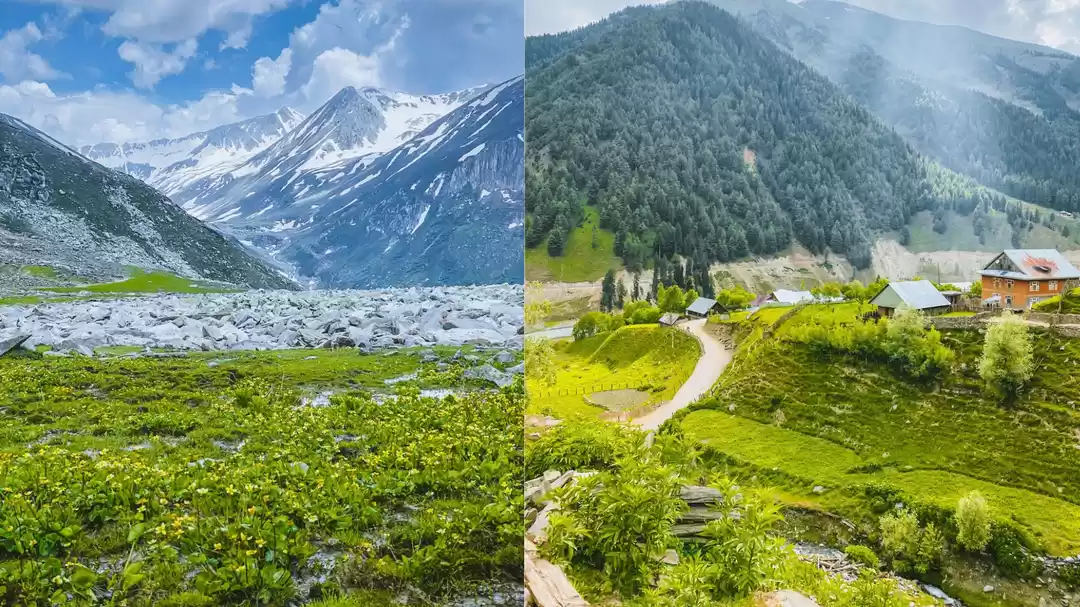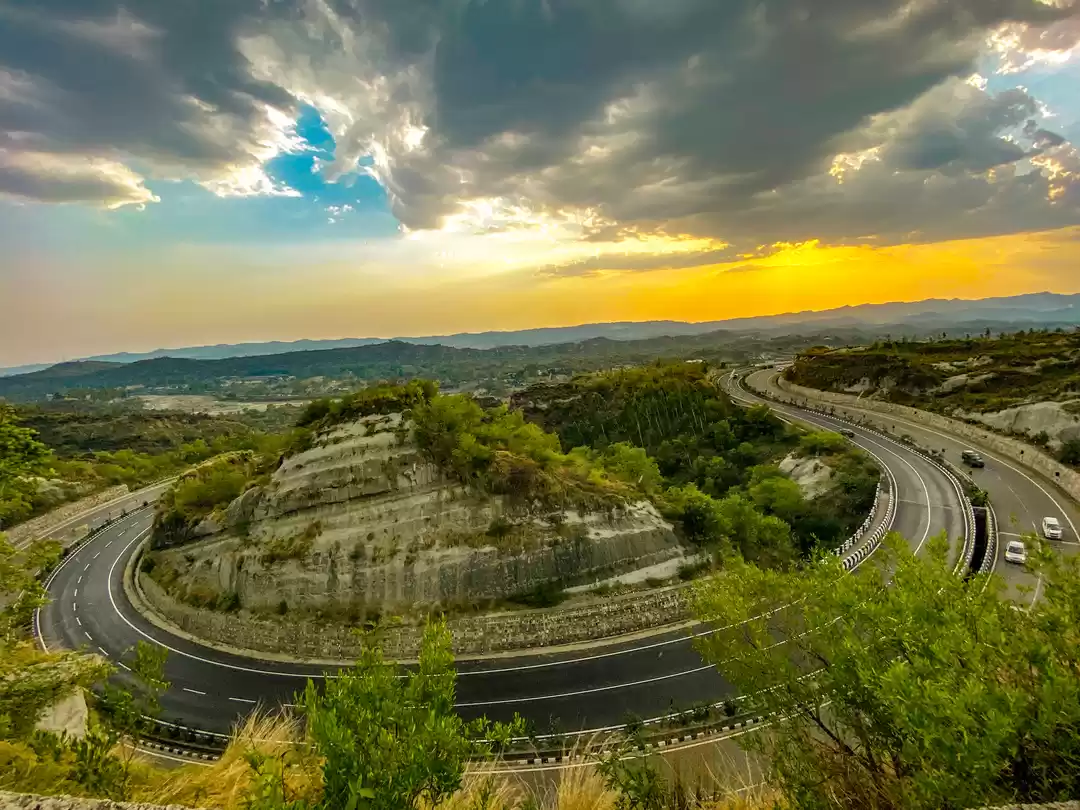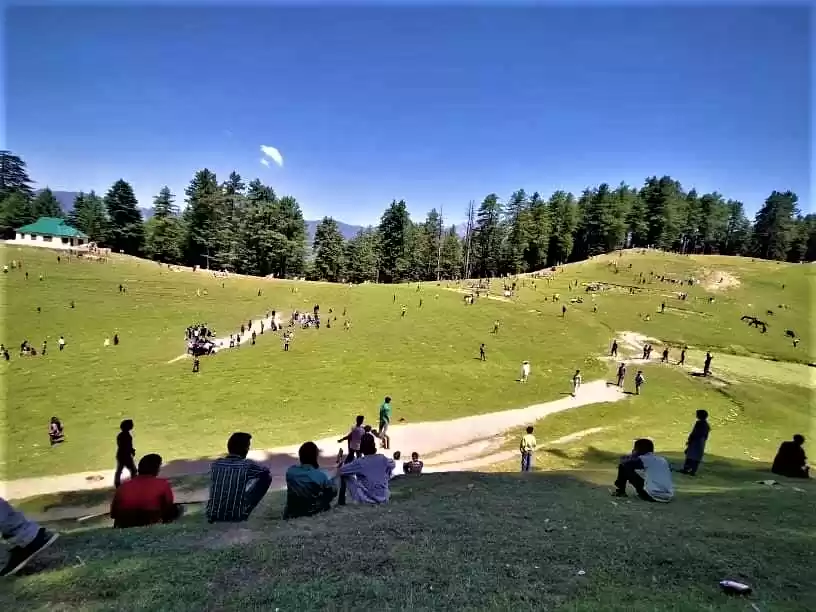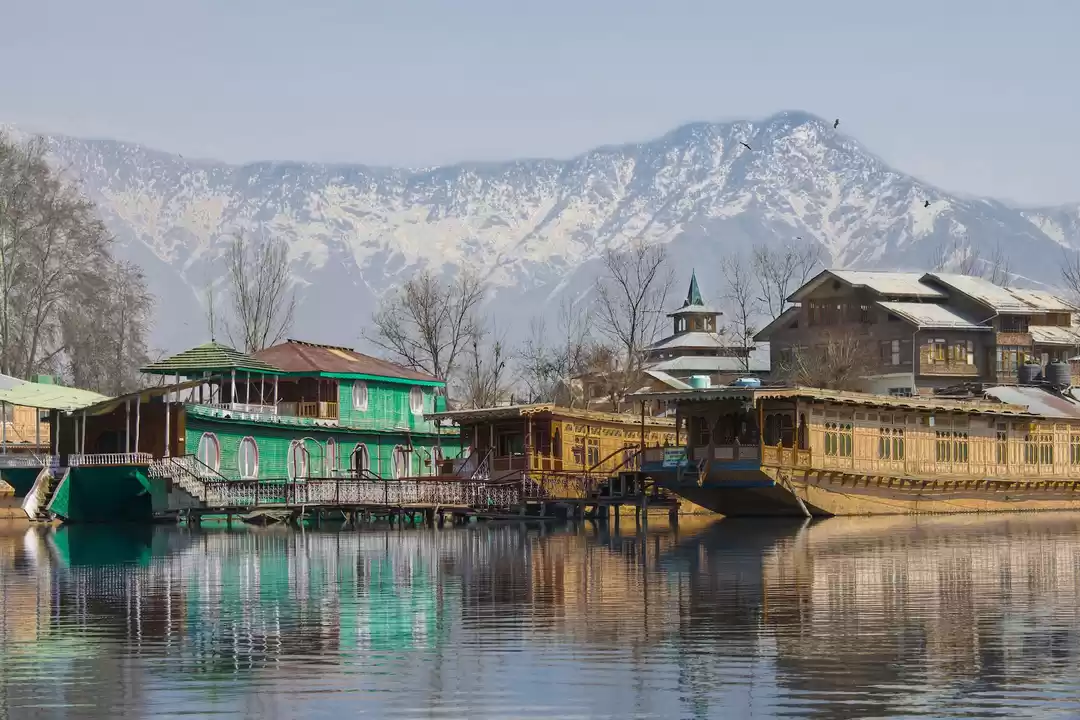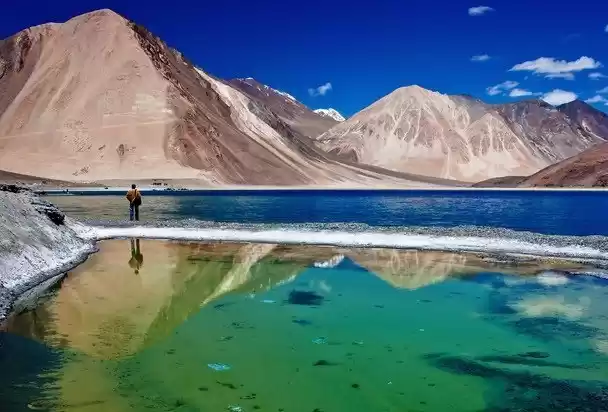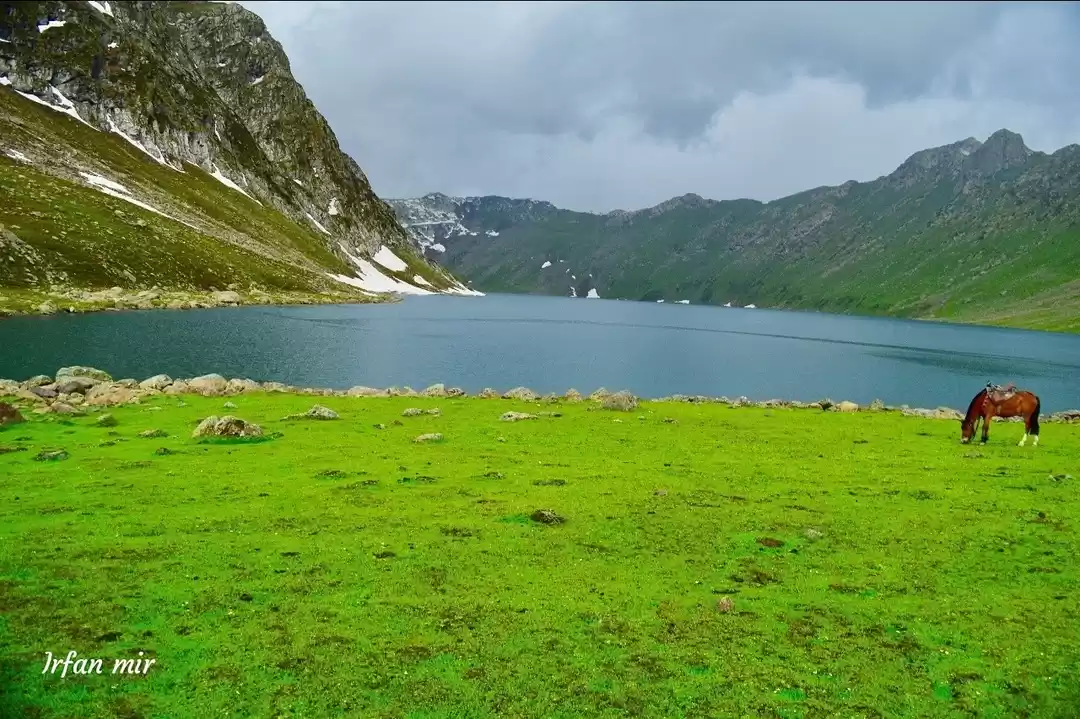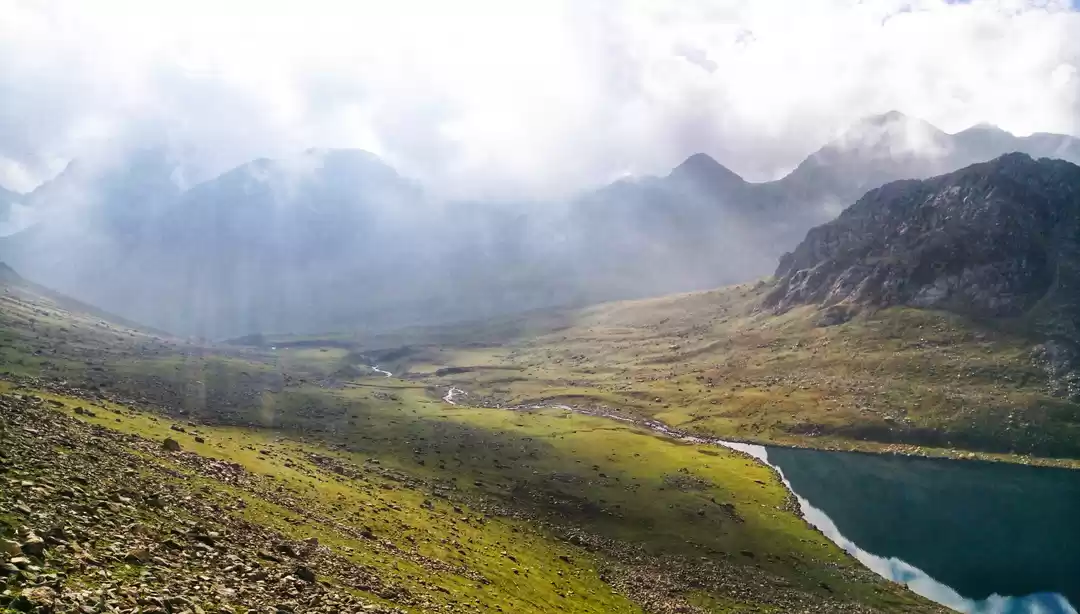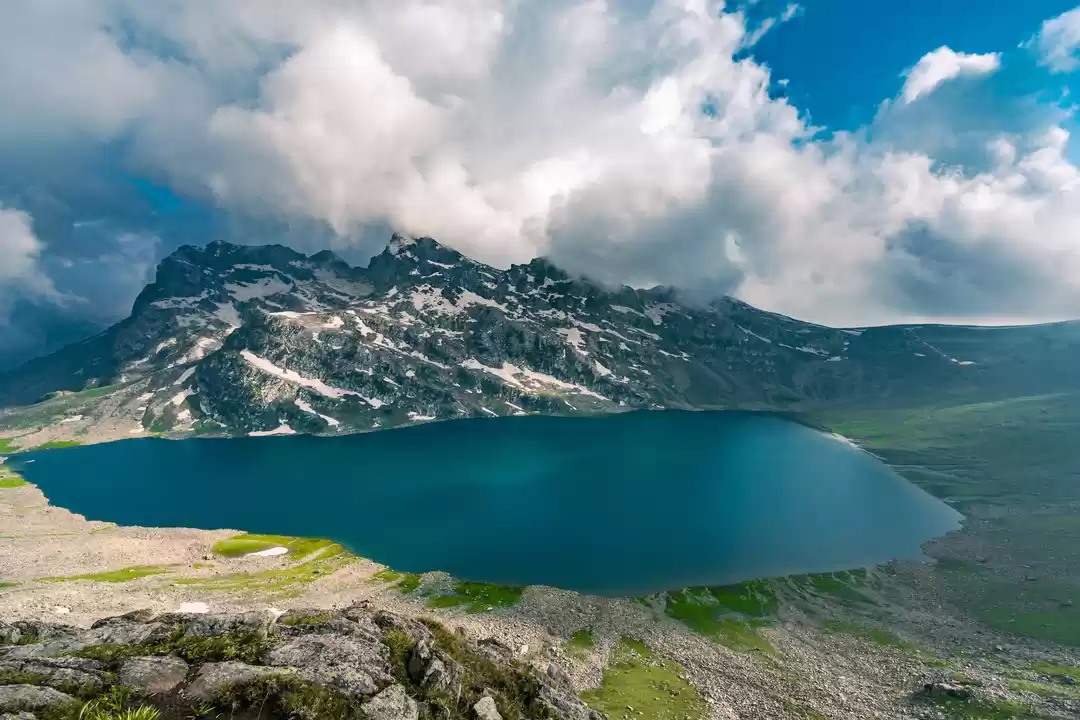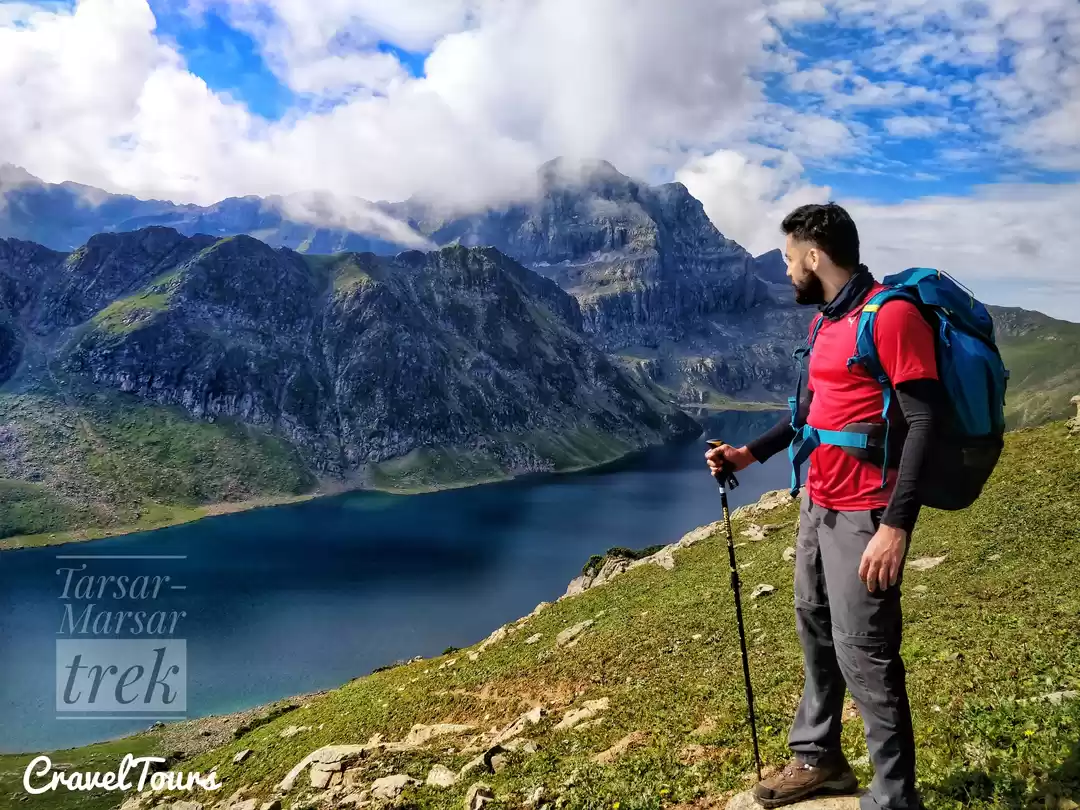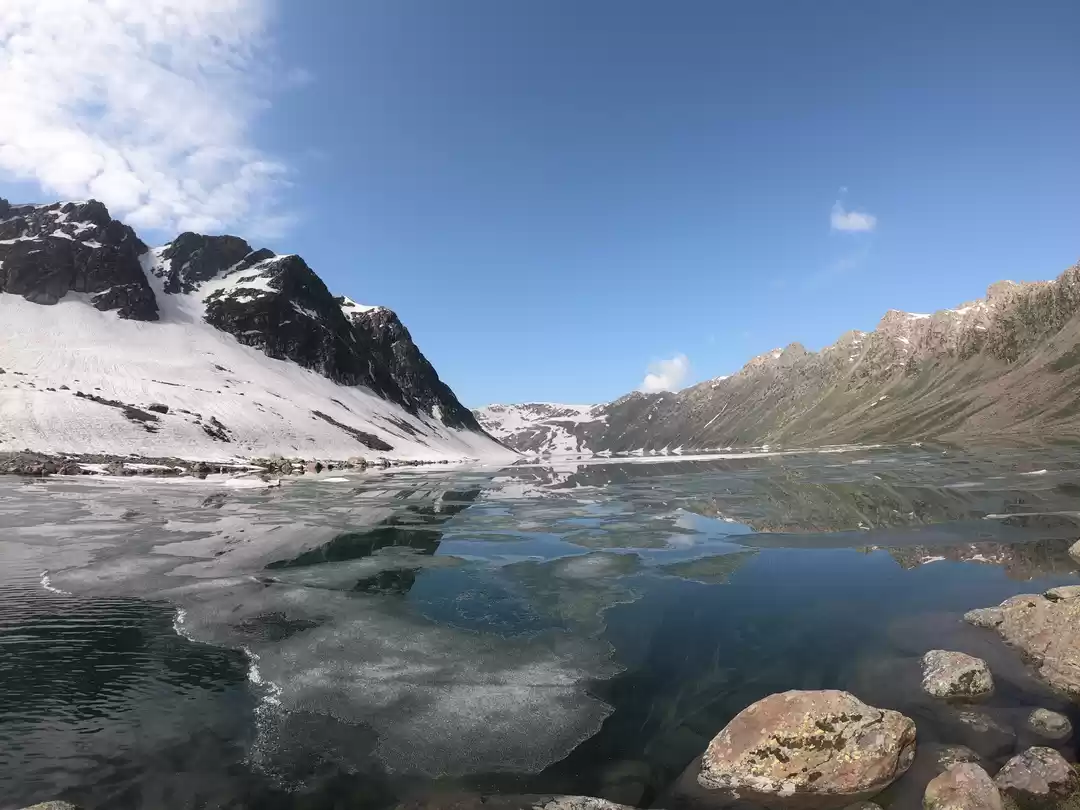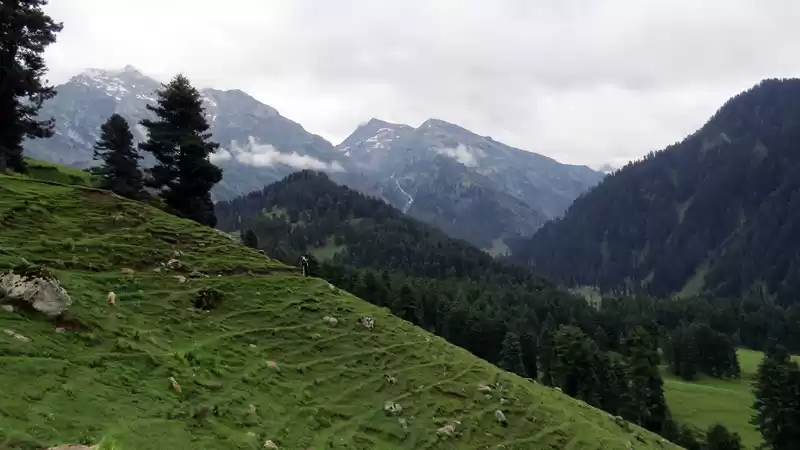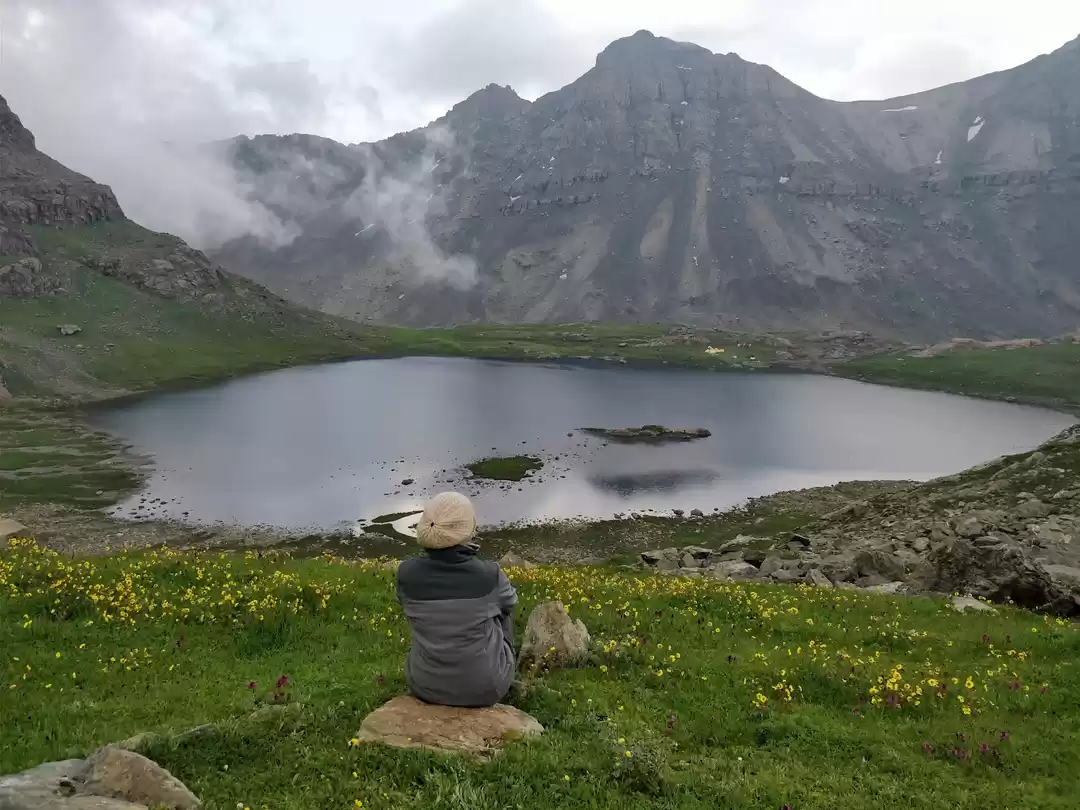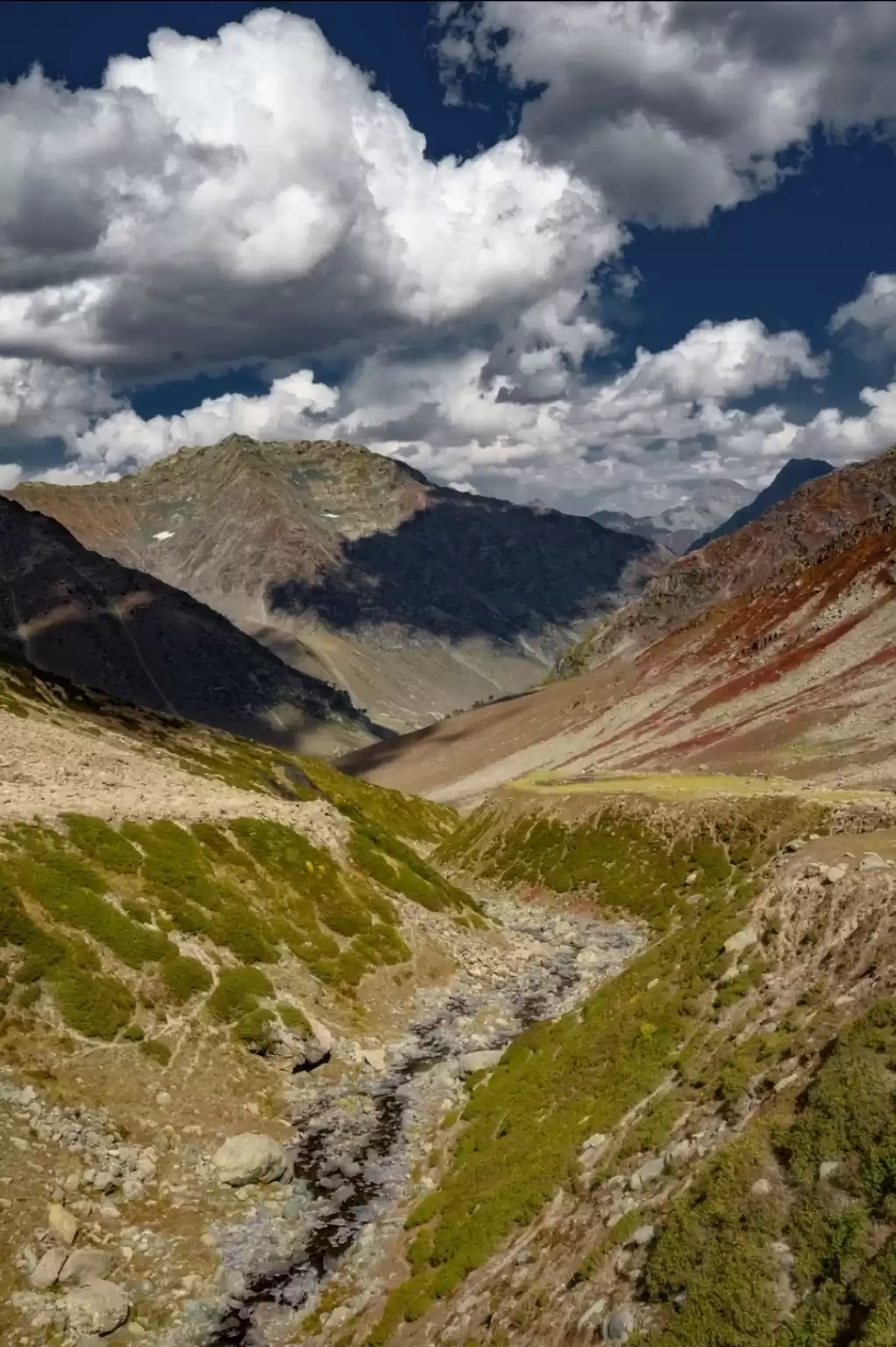







For the second half of the trail to Tarsar from Lidderwat, the landscape hardly changes. Boulders of varying sizes dot the grassy knolls, and instead of the pines and firs of Aru and Lidderwat, it’s the bare rocks that coat the slopes in alternating layers.
In a way this starkness is good, because it helps maintain the surprise element. Nothing prepares trekkers for the sight that Tarsar is.
Though we did the trek from Lidderwat to Tarsar in two days, experienced trekkers can do it in a day. The distance is about 10.5km and will take at most 7–8 hours. There are no tough climbs.
The trail leading out of Lidderwat is on a gentle ascent, winding its way around the hills, with a river flowing in the ravine alongside. The point that lies about midway—5.5km from Lidderwat—is Shekhwas, where we camped for the night.
The highlight of Shekhwas is wildflowers. It can even be called a mini Valley of Flowers. I photographed some 20 wildflowers—including speedwell, Indian hawksbeard, forget-me-not, buttercup, silver cinquefoil, tube lousewort and sage—in and around Shekhwas. So, if you are trekking in monsoon and have a liking for flowers, you can camp there for a day, or as I said, you can push off towards Lidderwat.
There were only a couple of ‘hurdles’ on way to Shekhwas from Lidderwat. The first—a minor one—was an old, hard patch of snow, which we had to cross. The second, and major, hurdle is a vast stretch of boulders that comes barely 200 metres before the Shekhwas campsite.
The boulders are probably the result of some landslide or mudslide a long, long time ago. They have remained there ever since, coming down in a stream from the top of the hill, all the way to the river below. Some of the rocks are 3–4 feet in height; one misstep, and a broken leg, or neck, or both, is guaranteed.
Apart from the wildflowers, I will remember Shekhwas for the rainbow exactly ninety degrees above our head which it welcomed us with.

From Shekhwas, the trail started with a gentle climb. Once we reached the top, a 30-minute walk on level ground took us to a Gujjar tea stall. From here, it was an easy the walk, save for another huge stretch of boulders that we had to cross.
An hour or so after the boulders, we could see patches of snow in the rocky creases of the surrounding mountains. Another five minutes and the ground beneath our feet changed. All of a sudden, wildflowers seemed to crop up everywhere.
The first variety I stumbled upon was a pair of everlastings—growing almost as if by mistake in that desolate landscape. But soon, they were followed by a sea of silver-leaved cinquefoils.
Even then, I did not realise what they signalled because the lake was behind the slope of a hill. The meadow ahead was carpeted with the yellow wildflowers (I also found some clustered rhodiola) and the narrow trail wound itself through this verdant blanket all the way to Tarsar.
The lake looked like a sapphire in a pile of pebbles. After the desolateness, its blue waters can seem almost surreal, especially if the weather is clear. We arrived amid dull weather but there was something magnetic about the lake that drew us to it at once.
It was windy and quite chilly. The horses lazing and grazing on the meadow covered with cinquefoils, the whispering wind, the crystal-clear water splashing on the rocks—the effect was all hypnotic. The sky was already overcast; within 90 minutes, dark rainclouds came looming over the lake.
Local Kashmiris believe that if something—even a pebble—is dropped in the lake, there is a cloudburst. While out taking photographs, I had seen some foreigners taking a bath in the lake! In my personal opinion, even if one doesn’t believe in such local superstitions—which most of us don’t—it’s better to honour local beliefs. It does nobody any harm.
Rain came pouring soon and lasted for about an hour. When it stopped, under a clear sky, the lake looked a ravishing blue. And as if such a stunning landscape was not enough, we got another spectacular gift from nature—a double rainbow. Tarsar probably couldn’t have looked any better.
The trek to Tarsar and its twin Marsar (about which I will write next) is often called the ‘Paradise Trek’. It wasn’t really difficult to figure out why.

